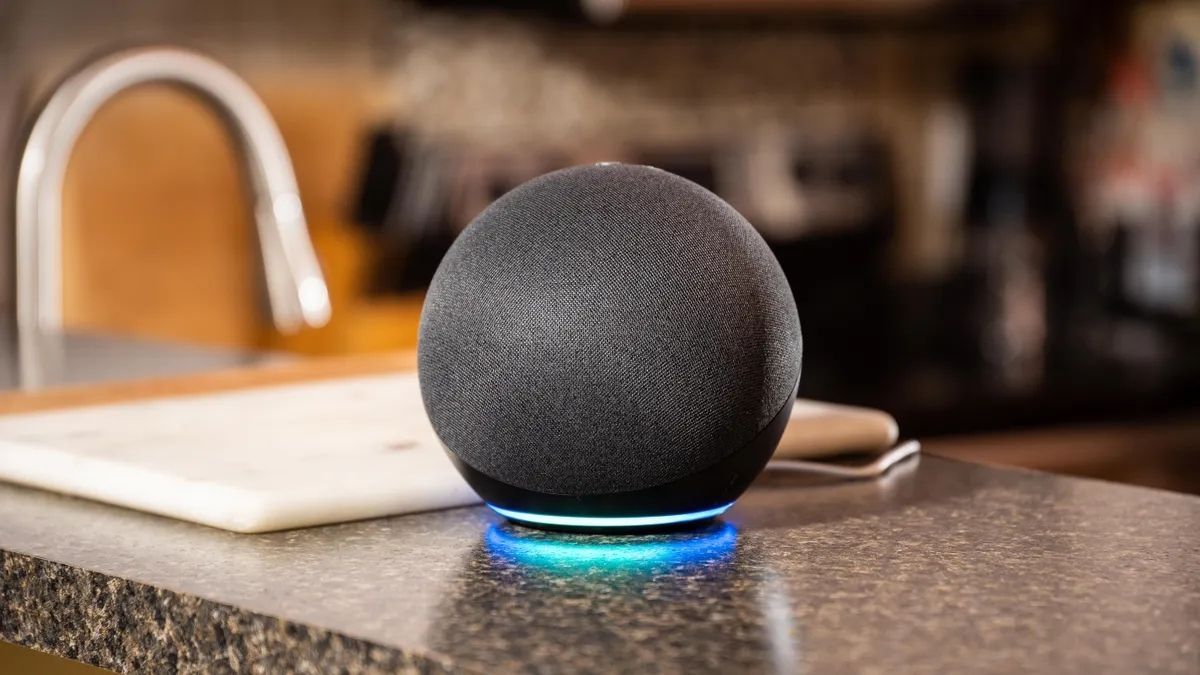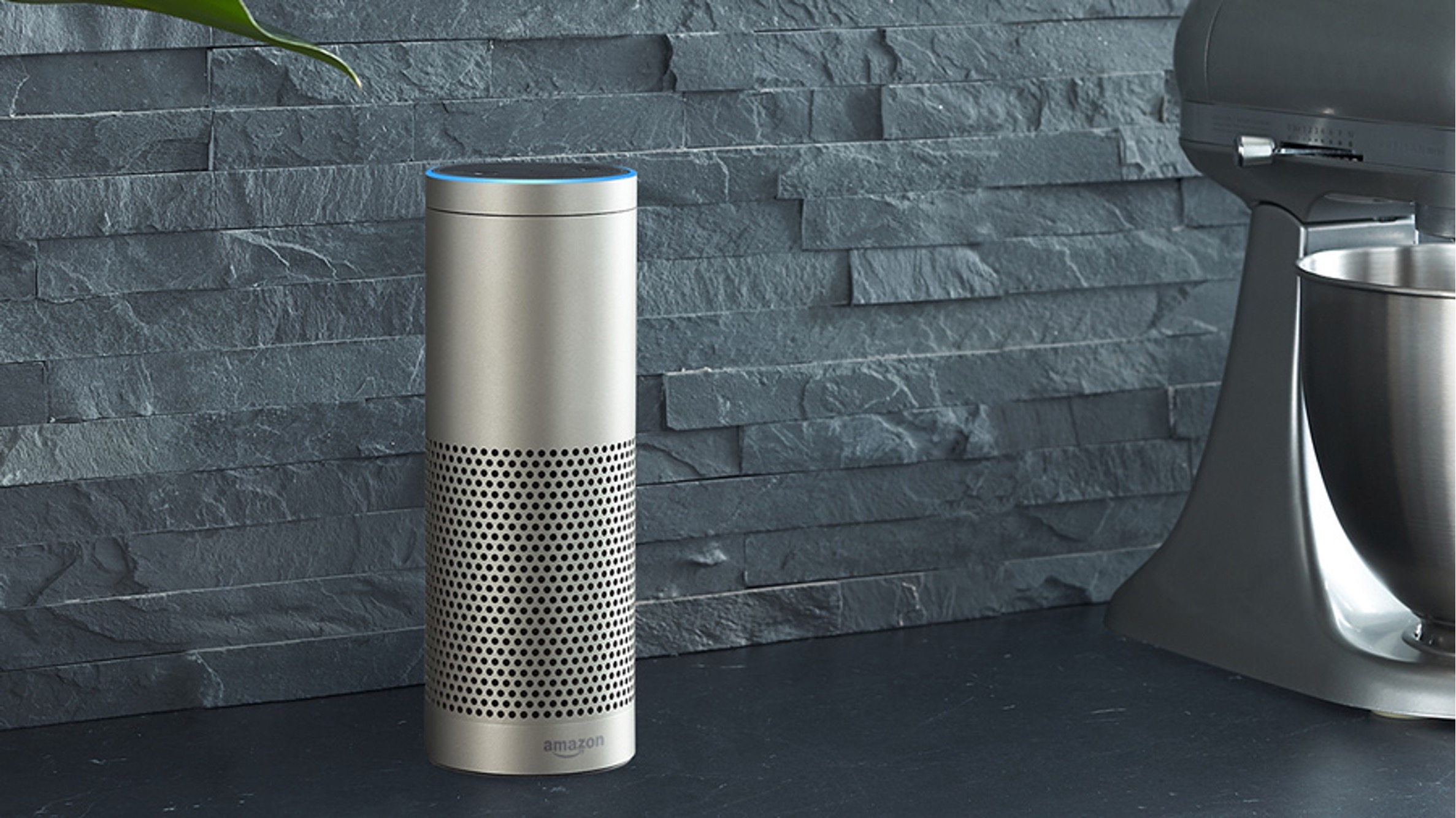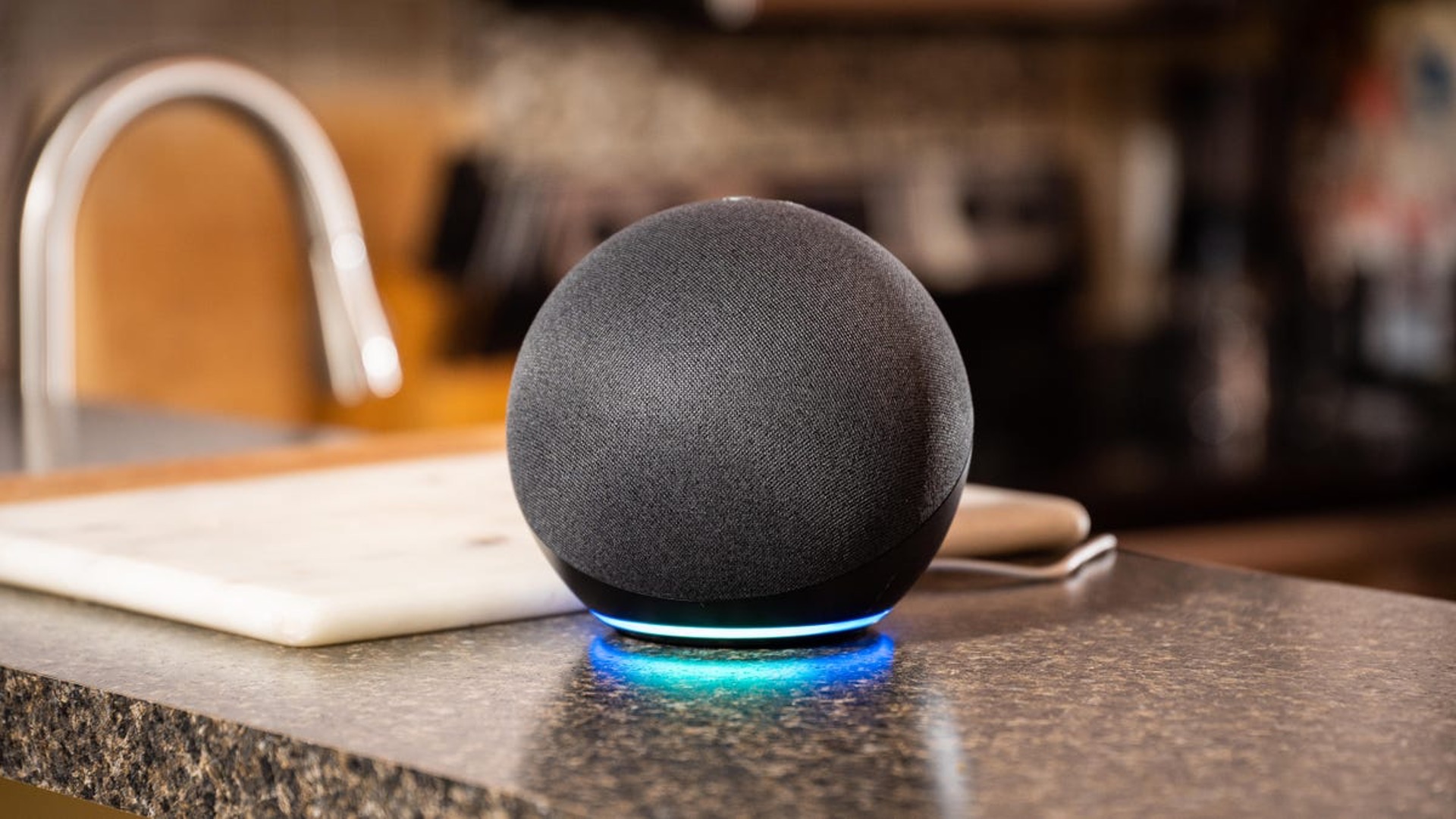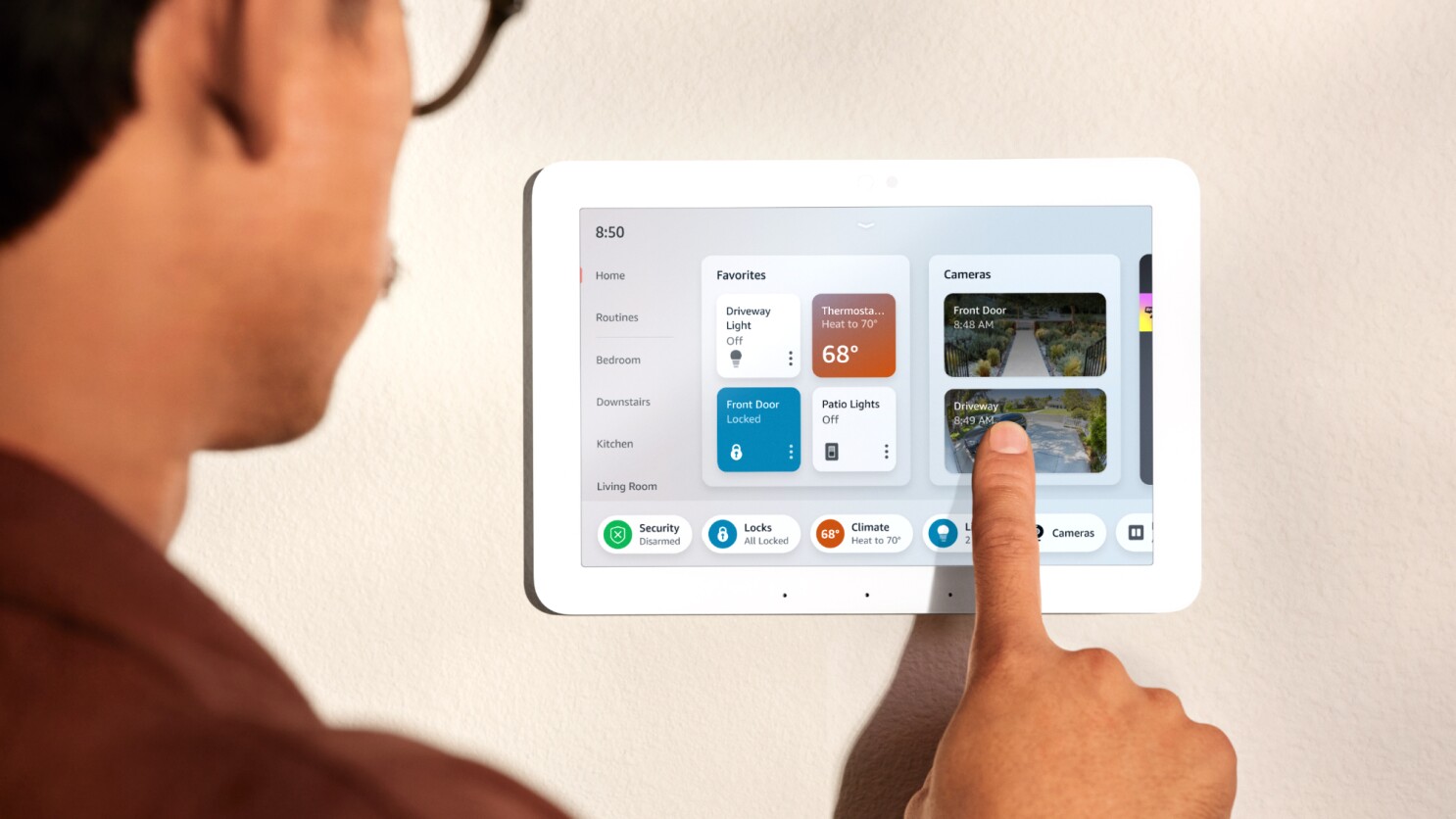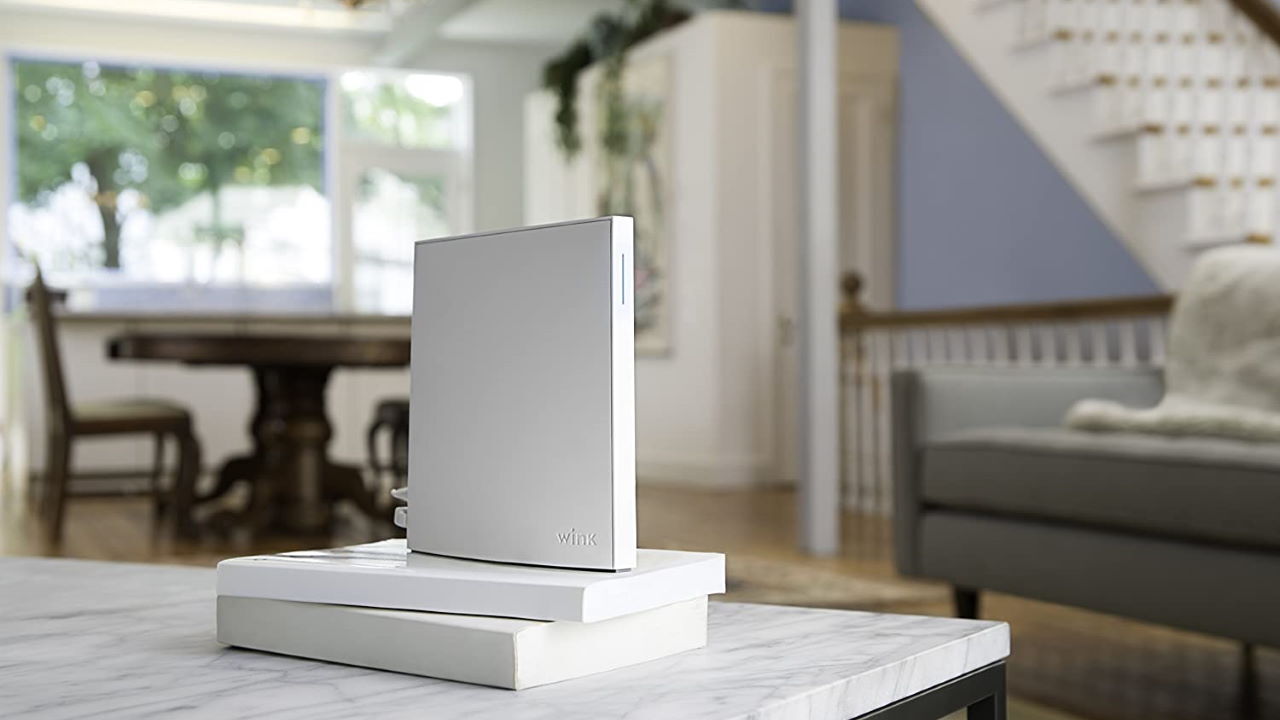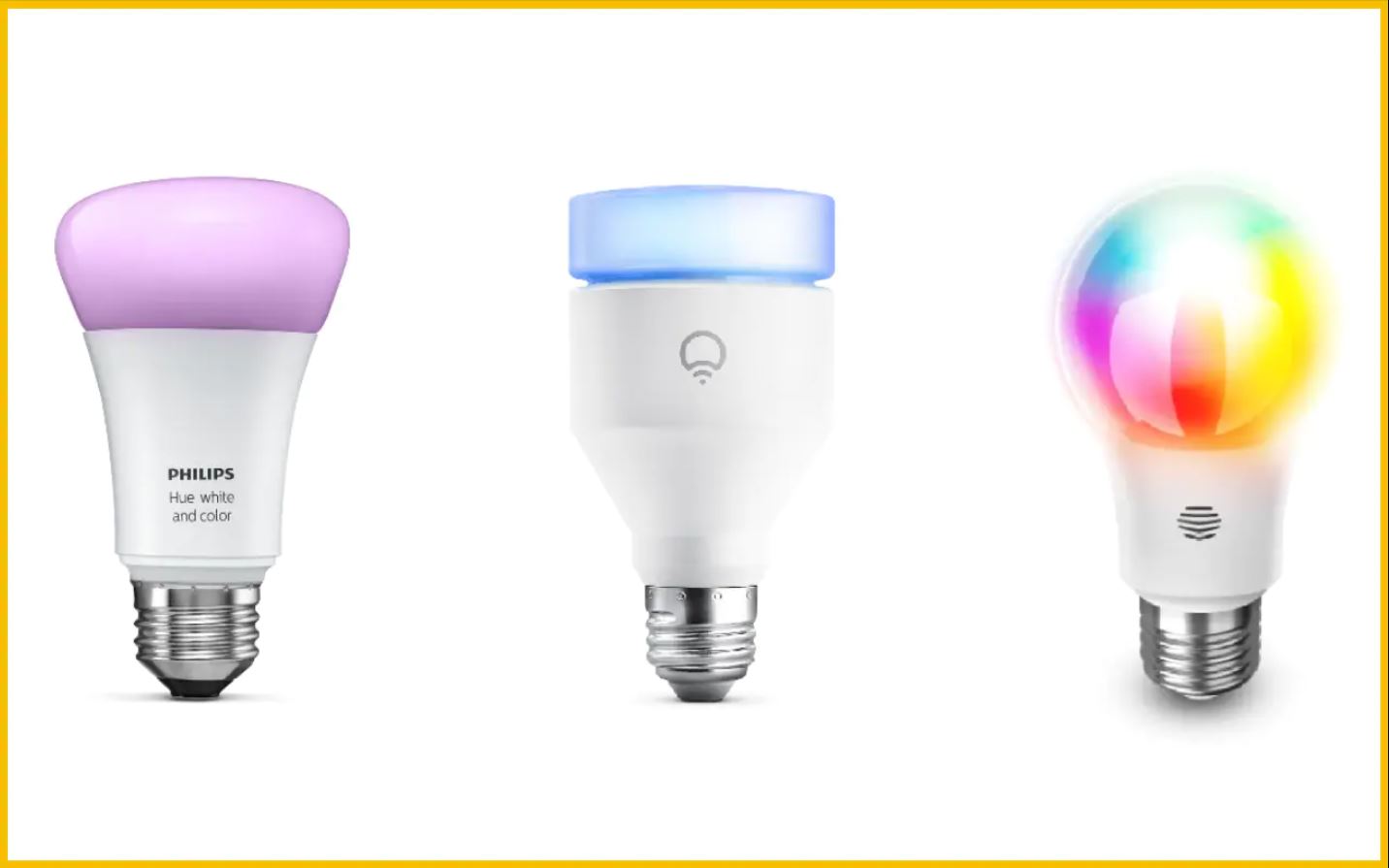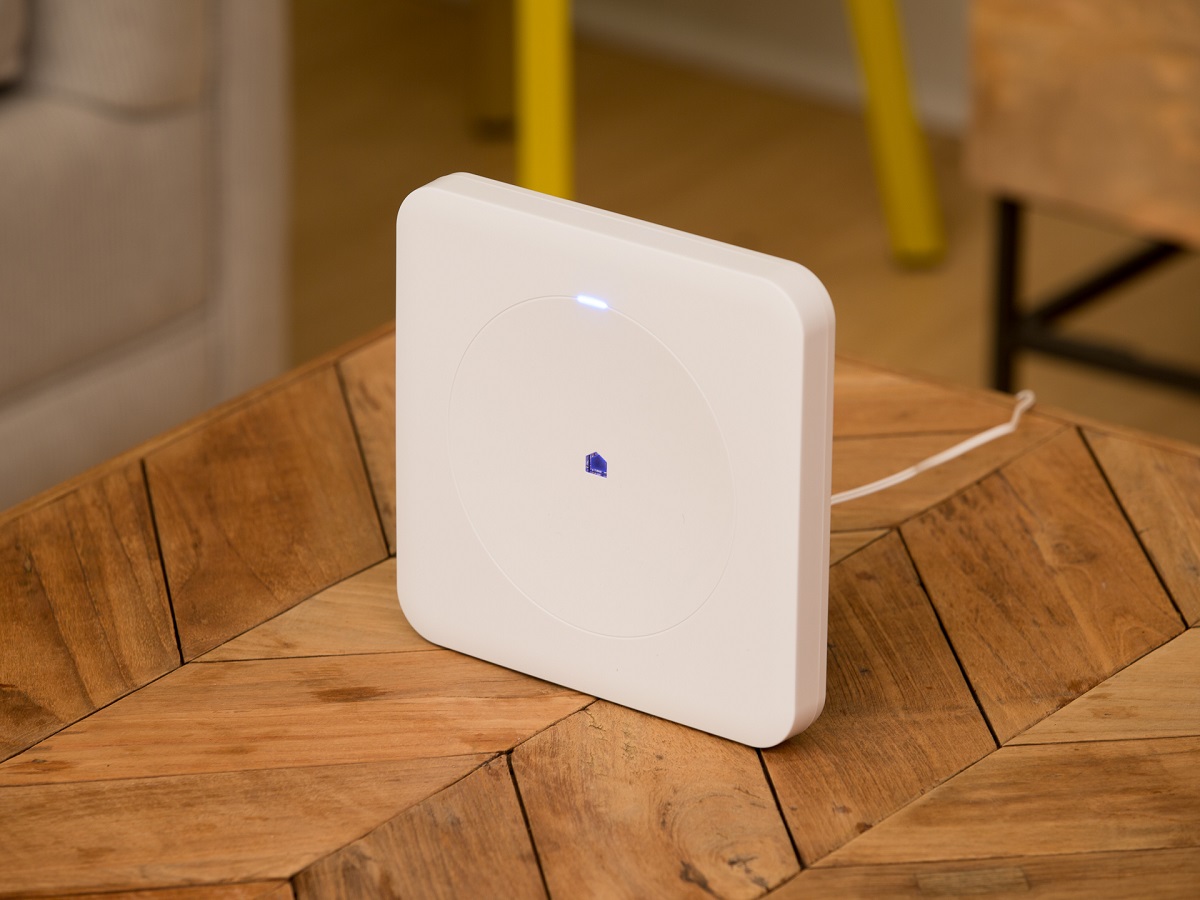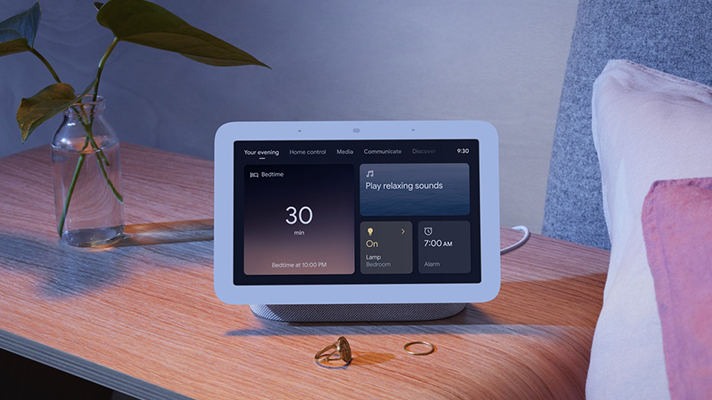What is a Smart Home Hub?
A smart home hub is a central device that serves as the control center for various smart devices and appliances within a connected home. It acts as the brain of the smart home system, enabling users to manage and automate different aspects of their home environment.
The main purpose of a smart home hub is to consolidate the control of multiple devices and facilitate communication between them. It allows users to control and monitor their smart devices through a single interface, usually through a smartphone app or a voice assistant.
A smart home hub typically connects to devices using various wireless protocols such as Wi-Fi, Bluetooth, and Zigbee. It acts as a bridge between these devices and the user’s network, providing a seamless and reliable connection.
One popular smart home hub is Alexa, powered by Amazon. Alexa works with a range of smart devices and acts as a voice-controlled assistant. It allows users to control their home devices through simple voice commands, making it a convenient and intuitive way to interact with the smart home ecosystem.
Some of the devices that can be controlled by a smart home hub include smart lights, thermostats, locks, cameras, speakers, and entertainment systems. By centralizing control, users can customize and automate various aspects of their home, enhancing convenience, energy efficiency, and overall comfort.
Not only does a smart home hub provide control over individual devices, but it also enables users to create scenes or routines. For example, with a single voice command, you can set up a “Good Morning” routine that turns on the lights, adjusts the thermostat, and plays your favorite morning playlist.
Overall, a smart home hub offers a comprehensive solution for managing and controlling smart devices within a connected home. It simplifies the user experience and enhances the functionality of smart devices, creating a more efficient and comfortable living environment.
How Does Alexa Work?
Alexa is a voice-controlled smart home hub developed by Amazon. It integrates with various smart devices and uses voice recognition technology to accept and execute commands. Understanding how Alexa works is essential to fully harness its capabilities and make the most of this powerful smart home hub.
When you issue a voice command to Alexa, the device records the audio and sends it to Amazon’s cloud servers for processing. In the cloud, advanced natural language processing algorithms analyze the voice command, extract the intent, and determine the appropriate action to take.
Alexa’s extensive database stores a vast collection of responses to different voice commands, enabling it to provide relevant and accurate information or execute specific functions. The cloud-based approach allows Alexa to continually learn and improve its understanding and responses over time.
Once Alexa processes the voice command and determines the action to take, it communicates with the connected smart devices to carry out the desired task. Whether it’s turning on the lights, playing music, adjusting the thermostat, or locking the doors, Alexa acts as the middleman between you and your smart devices.
Alexa supports a wide range of skills, which are essentially third-party apps and services that extend its functionality. Skills are developed by various companies and individuals and cover a broad spectrum of areas, such as entertainment, home automation, weather updates, and more. Users can enable and disable skills according to their preferences and needs.
Integration with other smart home devices is one of Alexa’s key strengths. It works seamlessly with a vast ecosystem of smart devices from different manufacturers. Whether you have smart lights, thermostats, security cameras, or appliances, chances are Alexa can interact with them.
Moreover, Alexa can be connected to other smart home hubs and platforms to create a more comprehensive and integrated smart home ecosystem. This allows for centralized control and management of all connected devices, even if they operate on different protocols or technologies.
As technology advances, Alexa continues to evolve and improve. Regular updates and new features are released to enhance its functionality and provide an even more intuitive and seamless user experience. With each update, Alexa becomes smarter, more capable, and better equipped to meet the evolving needs of its users.
Understanding how Alexa works not only helps you make the most of its features but also enables you to unlock its full potential. By exploring the capabilities of Alexa and the various skills and integrations available, you can create a more connected and efficient smart home environment.
Features of Alexa Smart Home Hub
Alexa, the smart home hub developed by Amazon, offers a wide array of features that make it a versatile and powerful device for managing your connected home. Understanding the features of Alexa can help you maximize its capabilities and tailor your smart home experience to your preferences. Here are some key features of Alexa:
1. Voice Control:
One of the standout features of Alexa is its voice-controlled interface. You can simply use your voice to interact with Alexa and control your smart home devices. Whether it’s turning lights on or off, adjusting the temperature, or playing your favorite music, Alexa can understand your commands and execute them effortlessly.
2. Smart Device Compatibility:
Alexa supports a wide range of smart devices and can seamlessly integrate with them. From smart lights and thermostats to security cameras and door locks, Alexa can control and manage various types of smart devices within your home. This compatibility makes it a convenient and centralized hub for all your smart home needs.
3. Skills and Apps:
With Alexa’s Skills feature, you can enhance the functionality of your smart home hub. Skills are essentially apps that extend the capabilities of Alexa. You can enable skills developed by various companies and individuals to add new functionalities, such as ordering food, requesting an Uber, or playing trivia games.
4. Routine and Schedule Automation:
Alexa allows you to create routines and schedules to automate tasks in your smart home. You can set up routines to trigger a series of actions with a single voice command or schedule certain tasks to occur at specific times. For example, you can create a “Goodnight” routine that turns off the lights, locks the doors, and adjusts the thermostat before you go to bed.
5. Music and Entertainment:
Alexa can be your personal DJ and entertainment hub. With built-in music streaming services like Amazon Music, Spotify, and Pandora, you can ask Alexa to play your favorite songs or create playlists based on your mood or genre preferences. You can also listen to podcasts, audiobooks, and radio stations using voice commands.
6. Smart Home Groups:
Alexa allows you to group multiple smart devices together based on their location or function. This feature enables you to control multiple devices simultaneously with a single voice command. For example, you can create a “Living Room” group that includes lights, TV, and speakers, and control them all together by simply saying, “Alexa, turn on the Living Room.”
7. Multi-Room Audio:
With multi-room audio support, Alexa can synchronize and play music across multiple Alexa-enabled devices in different rooms. You can create speaker groups and enjoy your favorite tunes throughout your home without the need for separate music systems in each room.
These are just a few of the many features offered by Alexa as a smart home hub. Its versatility, compatibility, and expanding ecosystem of skills make it a top choice for those looking to create a smart and connected home environment.
Benefits of Alexa Smart Home Hub
Alexa, the smart home hub developed by Amazon, offers a range of benefits that enhance the functionality and convenience of your connected home. Understanding the advantages of Alexa can help you make an informed decision about incorporating it into your smart home setup. Here are some key benefits of Alexa:
1. Seamless Voice Control:
With Alexa, you can control your smart home devices using natural voice commands. No need to fumble with smartphone apps or remote controls anymore. Simply speak your request, and Alexa will execute the command. This makes controlling your smart home truly hands-free and effortless.
2. Centralized Control:
Alexa acts as a centralized hub for managing multiple smart devices. Instead of dealing with individual device apps or controllers, you can control everything from one place. Whether it’s adjusting the temperature, turning lights on or off, or locking doors, Alexa provides a unified control system for your smart home.
3. Customizable Routines:
With Alexa, you can create customized routines to automate tasks and create personalized experiences. For instance, you can program a “Good Morning” routine that gradually raises the blinds, turns on the coffee maker, and reads out the day’s weather forecast. Such routines save time and streamline your daily activities.
4. Integration with Third-Party Devices and Services:
Alexa seamlessly integrates with a wide variety of third-party devices and services. You can connect smart devices from different manufacturers and control them all with Alexa. Additionally, the vast library of Alexa Skills allows you to extend its capabilities and integrate with various apps and services, from ordering food to requesting an Uber.
5. Smart Home Synchronization:
Alexa’s multi-room audio feature enables synchronized playback across multiple Alexa-enabled devices in different rooms. Whether it’s playing music, broadcasting announcements, or setting up an intercom system, Alexa ensures a seamless and synchronized audio experience throughout your home.
6. Convenient Entertainment Options:
Alexa provides a range of entertainment options at your fingertips. You can listen to music, podcasts, audiobooks, or radio stations through popular streaming services. With voice commands, you can play your favorite songs, discover new artists, or create personalized playlists. Alexa makes it easy to enjoy your preferred entertainment without any hassle.
7. Constant Learning and Improvement:
As an AI-powered device, Alexa continuously learns from interactions and user feedback. With regular software updates, Amazon constantly adds new features and enhances overall performance. This ensures that your Alexa device remains up to date, with new capabilities and improved functionality over time.
These are just a few of the many benefits that Alexa adds to your smart home environment. From effortless voice control to seamless integration with other devices and services, Alexa enhances convenience, simplifies tasks, and provides a truly connected and intelligent home experience.
Compatible Devices with Alexa Smart Home Hub
Alexa, Amazon’s smart home hub, is compatible with a wide range of smart devices and appliances. This interoperability allows users to control and manage their entire smart home ecosystem through the Alexa platform. Whether you already have smart devices or are planning to add them to your home, knowing which devices are compatible with Alexa can help you create a seamless and integrated smart home experience. Here are some of the compatible devices with Alexa:
1. Smart Lights:
Alexa is compatible with a variety of smart lighting systems, including Philips Hue, LIFX, and TP-Link. With Alexa, you can control the brightness, color, and on/off function of your smart lights using voice commands or through the Alexa app. You can also create lighting scenes or automate lighting schedules to suit your preferences.
2. Smart Thermostats:
Popular smart thermostats like Nest, Ecobee, and Honeywell are compatible with Alexa. This integration allows you to adjust the temperature of your home using voice commands or through the Alexa app. You can set specific temperatures, create temperature schedules, and even control individual rooms with compatible smart thermostats.
3. Smart Locks:
By connecting smart locks such as August, Yale, or Schlage to Alexa, you can lock or unlock your doors using voice commands. This compatibility with smart locks adds an extra layer of convenience and security to your smart home. You can also check the status of your locks and receive notifications when someone enters or exits your home.
4. Smart Cameras and Doorbells:
Security devices like Ring, Arlo, and Wyze Cameras sync with Alexa, enabling you to monitor and control your security cameras through voice commands or the Alexa app. You can view live feeds, receive motion or doorbell alerts, and even interact with visitors using two-way audio on compatible doorbell cameras.
5. Smart Speakers and Displays:
Alexa is integrated into a range of smart speakers and displays, including Amazon Echo devices, Sonos speakers, and select models from brands like Bose and LG. These devices offer hands-free voice control, superior audio quality, and the ability to stream music, podcasts, and other media content through Alexa.
6. Smart TVs and Entertainment Systems:
Many smart TVs from major brands like LG, Sony, and Samsung can be controlled using Alexa. You can use voice commands to turn the TV on or off, change channels, adjust the volume, and launch specific streaming apps. Additionally, Alexa can connect to entertainment systems and soundbars, allowing you to control audio playback with ease.
7. Smart Appliances and Cooking Devices:
Appliances like smart refrigerators, ovens, and coffee makers from brands like GE, Whirlpool, and Crock-Pot can be integrated with Alexa. This compatibility enables you to check the status of your appliances, adjust settings, and even start or stop cooking processes using voice commands.
The list of compatible devices with Alexa goes beyond these examples, with countless options available in diverse categories. Before purchasing a smart device, ensure that it explicitly mentions compatibility with Alexa. With the extensive range of compatible devices, you can create a smart home ecosystem that is seamlessly controlled through Alexa’s voice commands and app functionalities.
Setting up Alexa Smart Home Hub
Setting up Alexa, the smart home hub developed by Amazon, is a straightforward process that allows you to begin managing your smart devices and automating your connected home. Here are the steps to set up your Alexa Smart Home Hub:
1. Choose and Purchase an Alexa Device:
Select an Alexa-enabled device that suits your preferences and fits your needs. This can be an Amazon Echo, Echo Dot, Echo Show, or any other device that incorporates Alexa. You can find these devices on the Amazon website or in retail stores.
2. Download and Install the Alexa App:
On your smartphone or tablet, search for the Alexa app on the App Store (for iOS devices) or Google Play Store (for Android devices). Download and install the app onto your device. The Alexa app serves as the control center for managing your smart devices and settings.
3. Power on your Alexa Device:
Plug in your Alexa device into a power outlet using the provided power cable. The device will begin to power on, indicated by light or audio cues depending on the specific device. Wait for the device to finish booting up and establish a connection.
4. Connect Alexa to Wi-Fi:
Open the Alexa app on your smartphone or tablet. Follow the on-screen prompts to connect your Alexa device to your Wi-Fi network. This step requires you to enter your Wi-Fi credentials, allowing the device to establish a secure connection to the internet.
5. Set up Alexa Voice Assistant:
Once your Alexa device is connected to Wi-Fi, you will need to set up the Alexa voice assistant. Follow the prompts in the Alexa app to complete the device setup, such as setting the language, creating an Amazon account, and granting permissions.
6. Discover and Connect Smart Devices:
In the Alexa app, navigate to the Smart Home section. Here, depending on the specific device, you may need to enable a skill or connect directly through the app of the smart device you wish to control. Follow the instructions on the app or skill to authenticate and connect the device to Alexa.
7. Customize Alexa Settings:
With your smart devices connected, you can now customize your Alexa settings. This includes setting up device groups, creating routines, enabling skills, and customizing voice commands. Explore the Alexa app to personalize your smart home experience according to your preferences.
Once you have completed these steps, you can start controlling your smart devices with voice commands or by using the Alexa app. You can ask Alexa to turn on the lights, adjust the thermostat, play music, create routines, and much more. As you expand your smart home ecosystem, you can continue to add compatible devices to enhance your experience with Alexa.
Controlling Your Smart Home with Alexa
Controlling your smart home devices with Alexa, the smart home hub developed by Amazon, is a seamless and convenient experience. With simple voice commands or through the Alexa app, you can easily manage your connected devices, create routines, and customize your smart home environment. Here’s how you can control your smart home with Alexa:
Voice Commands:
Using natural language, you can control your smart devices with voice commands. Simply wake up Alexa by saying “Alexa” followed by your command. For example, you can say “Alexa, turn on the living room lights” or “Alexa, set the thermostat to 72 degrees”. Alexa will understand your commands and execute them accordingly.
Device Groups:
Create device groups in the Alexa app to control multiple devices simultaneously. For instance, you can create a group called “Living Room” and add all the devices in that room. Then, with a single command like “Alexa, turn off the Living Room”, you can control all the devices within that group.
Routines and Schedules:
With Alexa, you can create routines and schedules to automate actions and tasks. Routines allow you to trigger multiple actions with a single voice command or at a specific time. You can create routines for waking up, going to bed, or even custom routines like “Movie Night” that dims the lights, sets the temperature, and starts playing your favorite movie.
Scenes:
Scenes represent predefined settings for multiple devices that can be activated with a single command. For example, you can create a scene called “Dinner Time” that dims the lights, sets the dining room temperature, and plays relaxing music. Activating the scene is as easy as saying “Alexa, activate Dinner Time”.
Smart Home Skills:
Enable smart home skills in the Alexa app to control compatible devices from different manufacturers. Skills expand Alexa’s range of capabilities, allowing you to control specific devices or access additional features. For example, you can enable a skill to control your robot vacuum or adjust specific settings on your smart TV using voice commands.
Remote Access:
With Alexa, you can remotely control your smart home devices even if you are away from home. Whether you want to turn on the lights or adjust your thermostat before you arrive, you can do so using the Alexa app on your smartphone or tablet. Alexa provides convenient and remote access to your smart home, enhancing convenience and security.
Alexa App:
Control and manage your smart home through the Alexa app on your smartphone or tablet. The app provides a user-friendly interface to view and control all your connected devices. You can create routines, set up device groups, customize device settings, and explore new skills to further enhance your smart home experience.
By utilizing voice commands, device groups, routines, and skills, you can easily control and manage your smart home devices with Alexa. The flexibility and convenience of interacting with your smart home through voice commands or the Alexa app make it a seamless and enjoyable experience.
Customizing Alexa Smart Home Hub
Customization options play a vital role in tailoring your Alexa smart home hub to suit your preferences and needs. With Alexa, Amazon’s smart home hub, you can personalize various aspects of your smart home experience, from device settings to voice commands. Here are some ways to customize your Alexa Smart Home Hub:
Voice Training:
Teach Alexa to recognize your voice better by completing the Voice Training feature in the Alexa app. This ensures that Alexa can accurately understand your commands and provide more personalized responses. Voice Training can be especially useful if multiple people in your household use Alexa regularly.
Device Groups:
Use the device groups feature on the Alexa app to customize how you control multiple devices simultaneously. Create groups like “Living Room” or “Bedroom” and add the relevant devices to each group. With this customization, you can use voice commands to control all the devices within a group with a single command.
Routines and Scenes:
Create routines and scenes to automate tasks and customize your smart home environment. Routines allow you to define a series of actions that are triggered by a specific voice command or at a specific time. Scenes, on the other hand, represent predefined settings for multiple devices that can be activated with a single command. Customize routines and scenes to fit your daily routine and preferences.
Skills and Enable/Disable Skills:
Enable various skills in the Alexa app to extend the functionality of your Alexa smart home hub. Explore the Skills section in the app to find and enable skills developed by third-party companies and individuals. These skills add new capabilities to Alexa, allowing you to interact with specific apps and services. You can also disable skills that you no longer need or want to use.
Voice Commands:
You can customize the voice commands you use with Alexa. While many commands are predetermined, you can also set up your preferred custom commands for different actions. By customizing voice commands, you can make your interactions with Alexa more natural and personalized.
Privacy Settings:
Alexa provides privacy controls and settings that allow you to manage your data and interactions. Customize your privacy settings in the Alexa app to control access to your voice recordings, control how long Amazon retains your voice data, and manage your Alexa interactions. These settings give you peace of mind and maintain control over your privacy.
Rename Devices:
Customize the names of your individual smart devices in the Alexa app. This allows you to use more natural or intuitive names when giving voice commands, making it easier to identify and interact with specific devices. For example, you can rename a smart plug from “Bedroom Plug” to “Lamp” for easier voice control.
Actionable Notifications:
Customize actionable notifications on your Alexa-enabled devices to receive important alerts and updates. Enable notifications for specific events or activities, such as package deliveries or severe weather warnings. This allows Alexa to proactively inform you about important information or events within your home.
By customizing various aspects of your Alexa smart home hub, you can tailor the device to match your preferences and create a truly personalized smart home environment. Whether it’s adjusting voice settings, optimizing routines, or managing privacy, these customization options empower you to create a smart home experience that is uniquely yours.
Troubleshooting Alexa Smart Home Hub
While Alexa, the smart home hub developed by Amazon, is designed to provide a seamless and hassle-free experience, you may encounter occasional issues or glitches. Troubleshooting common problems can help you resolve issues quickly and get your Alexa Smart Home Hub back up and running smoothly. Here are some common troubleshooting steps:
1. Check Internet Connection:
Ensure that your Alexa device is connected to a stable and reliable internet connection. Check your Wi-Fi network settings, router placement, and consider resetting your router if necessary. An unstable internet connection can impact the performance and responsiveness of Alexa.
2. Power Cycle Your Devices:
Restart your Alexa device and any connected smart devices. This simple step can help resolve minor issues caused by software glitches. Disconnect the power source, wait for a few seconds, and then reconnect the devices. Allow them to fully boot up before testing Alexa again.
3. Update Alexa Device Software:
Ensure that your Alexa device is running the latest software version. New updates often include bug fixes and performance improvements. Open the Alexa app and go to the device settings to check for updates. Follow the prompts to update your device firmware if needed.
4. Check Device and Skill Compatibility:
Confirm that your smart devices and skills are compatible with Alexa. Incompatible devices may not respond to voice commands or work as expected. Check the manufacturer’s specifications and ensure that the devices and skills you are attempting to use are officially supported by Alexa.
5. Reauthorize Smart Home Skills:
If you are experiencing issues with specific smart home skills, try reauthorizing them. Open the Alexa app, go to the Skills & Games section, find the relevant skill, and disable it. Then, re-enable the skill and follow the prompts to reauthorize the connection. This can resolve any communication issues between Alexa and the skill.
6. Check Device Placement and Distance:
Proper device placement helps maintain a strong connection between Alexa and your smart devices. Ensure that your Alexa device is placed within the recommended range of your smart devices, as excessive distance can cause communication issues. Additionally, avoid placing Alexa near other electronic devices that may cause interference.
7. Reset Alexa Device to Factory Settings:
If none of the above steps resolve the issue, consider resetting your Alexa device to factory settings. This should be a last resort, as it will erase all device settings and personal preferences. In the Alexa app, navigate to the device settings, select “Reset to Factory Defaults,” and follow the instructions to reset the device.
8. Contact Amazon Support:
If you are still experiencing persistent issues with your Alexa Smart Home Hub, reach out to Amazon’s customer support. They can provide further assistance and guidance to resolve more complex issues or escalate the problem if necessary.
Troubleshooting common problems with your Alexa Smart Home Hub can help ensure a smooth and uninterrupted smart home experience. By following these troubleshooting steps, you can quickly address issues and get back to enjoying the full functionality and convenience of your Alexa-powered smart home.
Conclusion
Alexa, Amazon’s smart home hub, offers a wide range of features and benefits, making it an ideal choice for managing your connected home. With its voice-controlled interface, compatibility with various smart devices, and extensive customization options, Alexa provides a seamless and convenient smart home experience.
Through voice commands, you can control and manage your smart devices with ease. Whether it’s adjusting the lights, setting the temperature, or playing your favorite music, Alexa makes controlling your smart home effortless. The ability to create routines and scenes further enhances automation, allowing you to simplify daily tasks and personalize your smart home environment.
Alexa’s compatibility with a vast range of smart devices and the integration with third-party skills give you the flexibility to expand and customize your smart home ecosystem. From smart lights and thermostats to security cameras and entertainment systems, Alexa acts as a centralized hub for managing all your devices and services.
Customization is another key strength of Alexa. You can customize voice commands, device groups, routines, and scenes to suit your preferences and tailor your smart home experience. This level of customization allows you to create a smart home environment that fits your lifestyle and enhances comfort and convenience.
However, in the event of issues or glitches, troubleshooting steps such as checking the internet connection, updating software, and verifying compatibility can help resolve any problems you may encounter with Alexa. Additionally, Amazon’s customer support is available to provide assistance and further guidance if needed.
In conclusion, Alexa serves as a powerful and user-friendly smart home hub. With its extensive features, compatibility with a wide range of devices, and customization options, Alexa provides a seamless and enhanced smart home experience. By incorporating Alexa into your connected home, you can enjoy the convenience, efficiency, and personalization that a smart home ecosystem offers.







